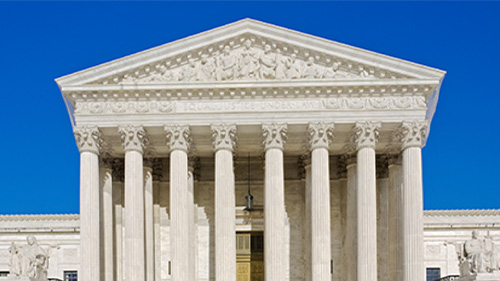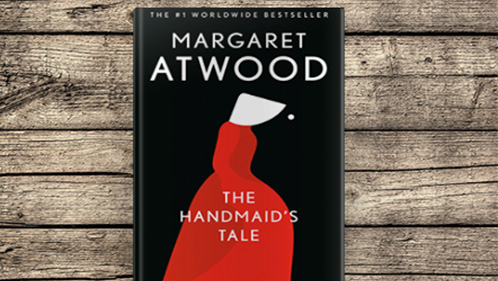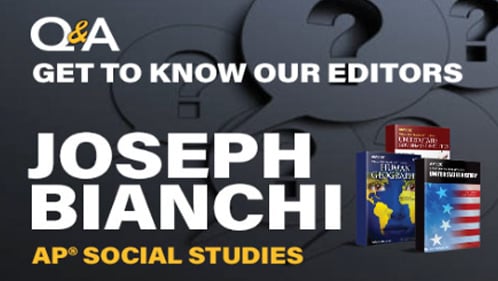AP® US History: Article Analysis
In a 2004 Gallup survey, history and social studies ranked as the least popular subject for teenagers. Why is this? Many adults recount history class...
AP & Honors Mathematics
Explore Wiley titles to support both AP and Honors mathematics instruction.
Literacy Skills & Intensive Reading
Connections: Reading – Grades 6–12
Empower student success with a proven intensive reading program that develops strong reading skills in striving readers.
Drama, Speech & Debate
Basic Drama Projects 10th Edition
Build students’ confidence and competence with comprehensive, project-based theatre instruction.
Literature
Connections: Literature
Support learners as they study dynamic, relevant texts and bring the richness of diverse voices to students through literature.
Literature & Thought
Develop critical thinking, reading, and writing across literacy themes, genres, historical eras, and current events.
Language Arts
Vocabu-Lit® – Grades 6–12
Help students build word power using high-quality contemporary and classic literature, nonfiction, essays, and more.
Connections: Writing & Language
Help students develop grammar, usage, mechanics, vocabulary, spelling, and writing and editing skills.
Reading/English Language Arts
Measuring Up to the English Language Arts Standards
Incorporate standards-driven teaching strategies to complement your ELA curriculum.
English Language Learners
Measuring Up for English Language Learners
Incorporate research-based best practices for ELLs with an approach that includes a focus on language acquisition strategies.
Mathematics
Measuring Up to the Mathematics Standards
Incorporate standards-driven teaching strategies to complement your mathematics curriculum.
Foundations
Measuring Up Foundations
Help students master foundational math skills that are critical for students to find academic success.
Science
Measuring Up to the Next Generation Science Standards
Give students comprehensive NGSS coverage while targeting instruction and providing rigorous standards practice.
Assessment
Measuring Up Live
Deliver innovative assessment and practice technology designed to offer data-driven instructional support.
For a better website experience, please confirm you are in:
2 min read
Patrick Sprinkle Dec 1, 2021 5:32:00 PM

One of the most vexing problems facing students and teachers alike is the teaching of Federalist #10. Federalist #10 and the issue of factions is critical to understanding the Madisonian model, and the complexities of the design scheme of the United States’ federal system. While students generally grasp the concept of factions and can very easily see the connection between interest groups and political parties, they often are unable to see their inevitable nature in a free society. What are factions, why do they need to be controlled, what is the best way to control them, and furthermore, to what extent does the check on factions, a large republic, still work today?
Whenever a student takes on a complex text, it is essential that they are given time to read, process, collaboratively discuss the ideas, and allow time to process as a whole class. I have chosen a jigsaw technique for Federalist #10 because it will empower students by giving them a sense of ownership on a particular portion and provide them partners with which to discuss the key ideas. Students focusing on one component will allow specialization, and then the ability to learn from their partners. In addition, it would be fruitful for teachers to go over the key questions for each jigsaw group. This will ensure that all students get the information critical to understanding Madison.
If students are struggling with the text, one of the most used approaches, and this can be an accommodation teachers make, is to use APPARTS (Author, Place and Time, Prior Knowledge, Audience, Reason, The Main Idea, and Significance). While this is tedious and cannot be used with all primary sources, for the core documents of the Advanced Placement® Exam, it may be a critical and helpful tool that allows students to make sense of the context and purpose of the document and its placement in the court.
Finally, one of the best techniques teachers can use is to make connections to the present day. Given the intense polarization that has taken hold in the United States, and the competing and intense factions that exist, students should be asked, “Are our factions still checked by the formation of a large republic?,” as Madison suggested they would? This critical question will provide for bountiful discussions about parties, the media landscape, polarization, and the stability of our democratic experiment.
Check out the lesson and activity here!
Pat Sprinkle is a 13th year history teacher at the NYC Lab School for Collaborative Studies, teaching AP® U.S. History and AP® U.S. Politics and Government. Pat is a graduate of The Ohio State University and Columbia University. Pat has served as a member of the Teacher Advisory Council for the Bill and Melinda Gates Foundation, National Humanities Center, and the National Constitution Center. In addition, Pat was a 2013 James Madison Fellow along with a 2021 C-SPAN Fellow. Pat lives in Jersey City, NJ with his wife, son (Franklin), and dog (Lyndon).

In a 2004 Gallup survey, history and social studies ranked as the least popular subject for teenagers. Why is this? Many adults recount history class...

The Supreme Court of the United States is often seen as the most distant and befuddling branch for my students. Whether it is misunderstanding their...

One of the most critical skills students will need on the AP® United States Government Exam is data literacy. Not only will there always be a...

One of the most important goals of civics education is to get students to understand the imperfections of the constitutional system of the United...

Many teachers consider the Document Based Question (DBQ) of the AP® European History Exam to be one of the more challenging aspects of the course....

Netflix, Hulu, and Disney+ have taken over much of the television industry by taking popular and enticing books or comics and creating a TV series...

The Long Essay Question (LEQ) on the AP U.S. History exam offers students an opportunity to construct a sophisticated historical argument, supported...

In 2021, the College Board® added a new section to the AP® U.S Government and Politics Exam: quantitative analysis. This counts for four raw points...

One of the more perplexing topics for students on the AP exam is federalism, due to the complex nature of the federal-state relationship. Most...

With just one percent of students earning the complexity point on the 2021 AP® World History DBQ, is teaching it even worth it? John Maunu says,...

Get to know one of our editors, Joseph Bianchi, who specializes in AP® Social Studies. Joe answers our questions about how he carries over his 25...

I must have convinced you of the need to build a classroom community from my first post because…you’re here. Or maybe you already know that you need...
